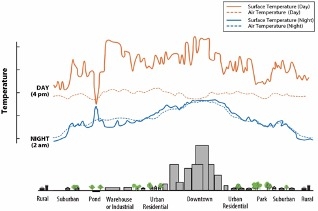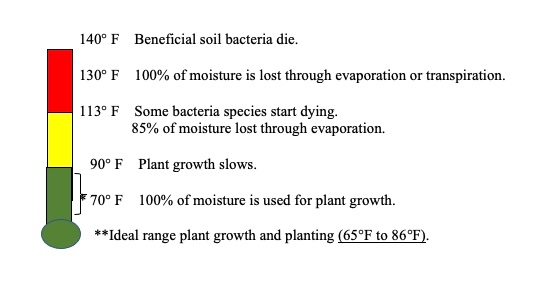On any given day, air and surface temperatures tend to be higher in urban areas than in surrounding rural settings. This phenomenon is called the heat-island effect.
Temperatures can also vary within a city depending on the concentration of heat-absorbing buildings and pavement and the cooling presence of parks or green roofs. Surface temperature and air temperature differ across environments, although air temperatures do not vary as widely during the day as surface temperatures do.
(Chart courtesy of the EPA)
According to the EPA, several factors contribute to heat islands. Urban areas with few natural landscapes, such as parks, are potential heat islands. The asphalt and concrete in urban areas absorb and later release the day's heat. The narrow streets and tall buildings in our cities create “canyons” that block wind flow, and the concentration of streets and buildings holds the heat longer. What's more, cities have more vehicles, more air conditioning, more industrial facilities—all of which contribute to the heat island effect.
Those are all human causes, but weather and geography play a role, too. Calm, clear weather allows more solar energy to reach surfaces, whereas cloud cover and wind keep temperatures lower. Nearby mountains can block wind from reaching a city.
Some cities are taking steps to mitigate the heat-island effect by creating more parks and green roofs and planting street trees. Others are exploring the emerging science of cool pavement technology by using lighter-colored road surfaces and replacing hard, dark surfaces on playgrounds. Varying the heights of buildings can decrease the urban canyon phenomenon and increase airflow. Some cities are encouraging more “green” and energy-efficient buildings and the use of cooler roofing materials. Others are providing shelters and shade trees at bus stops.
Will weather patterns change if cities can eliminate some of the causes of a heat island? Only time will tell.
The heat-island effect affects all of us. It increases energy consumption, raises emissions of greenhouse gases and air pollutants, harms water quality, and negatively impacts our health and comfort. We run air conditioners more often, which increases the demand for fossil fuels that emit pollutants, thereby increasing greenhouse gases.
The toll on health is largest on the elderly, who often have chronic conditions and disabilities; on low-income folks who live without air conditioning and in more crowded conditions; and on people who work outdoors. From 2004 to 2018, the Centers for Disease Control and Prevention recorded an average of 702 heat-related deaths per year in the U.S. With climate change, these figures will only increase.
How does all of this relate to home gardeners? Organic matter is what keeps soil alive and healthy. A teaspoon of healthy soil contains millions of living organisms. But high temperatures can devastate these organisms, turning your soil into plain dirt. Read the chart from the bottom up:
(Graphic courtesy of USDA)
A team of Master Gardeners recently recorded temperatures in one Napa neighborhood on March 4 and again on June 21. On June 21, temperatures were recorded twice, at 10:30 a.m. and at 3:30 p.m. Of course, you remember that 104°F day!
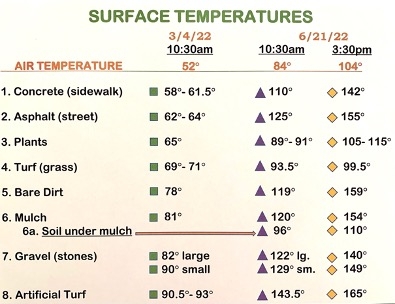
What can you do to counter the heat-island effect? Plant more trees. Trees protect against high winds, erosion and flooding. They keep carbon in the ground and keep groundwater clean. Plus, they shade our homes, reducing our energy consumption.
Cover the ground with living plants to absorb carbon dioxide rather than reflect the sunlight. Lawns require heavy watering and contribute little to soil health because the roots are shallow. If possible, choose other plants and shrubs that provide abundant roots, create healthy soil and sequester carbon.
Cover bare ground with organic mulch. As the chart shows, the soil under mulch is significantly cooler than the mulch itself. But choose your mulch carefully. Some dyed mulches may leach toxins, and dark or black mulch gets hot and can harm tender plants. Rock may be a good choice around cactus, but be wary of covering large areas with rocks or stones, which absorb and retain heat, later releasing it into the atmosphere. Limit rocks or stones to shady areas.
Use permeable material for hardscape instead of concrete or other solid surfaces. With permeable material, rain is absorbed by the soil rather than running off. Permeable surfaces also don't retain heat like non-porous and darker surfaces.
Avoid artificial turf. Not only is it hot to the touch, but it also kills anything underneath it. There is truly nothing beneficial about it. Notice that it produced the hottest reading on the Surface Temperature chart.
To learn more about heat islands, visit the websites of Heat.gov or the EPA. For children, NASA has a “Climate Kids” website, full of great information and age-related activities.
Become a Master Gardener Volunteer! UC Master Gardeners of Napa County is now accepting applications for the Class of 2023. Click on the ”Join Us” button at napamg.ucanr.edu to read the informational brochure and register to attend a mandatory information session for applicants. Applications are due before 5 p.m. on September 30.
Workshop: UC Master Gardeners of Napa County will host a workshop on “Dealing with Heat and Less Water in the Garden” on Saturday, August 27, from 11 a.m. to 1 p.m., at Las Flores Learning Garden, 4300 Linda Vista Avenue, Napa. Learn about hot-weather plant care while still conserving water. Workshop is outdoors. Space is limited and registration required.
Library Talk: UC Master Gardeners will host a talk on “Lawn Alternatives” via Zoom on Thursday, September 1, from 7 pm to 8 pm. Learn about alternatives to lawn that will enrich your soil, attract pollinators and enhance the beauty of your yard. Register to receive the Zoom link.
Food Growing Forum: Join UC Master Gardeners of Napa County fo ra free forum on “Alliums: Onions, Garlic and More” on Sunday, September 11, from 3 pm to 4 pm, via Zoom. Register to receive the Zoom link: https://ucanr.edu/sites/ucmgnapa/?calendar=yes&g=9191.
Got Garden Questions? Contact our Help Desk. The team is working remotely so please submit your questions through our diagnosis form, sending any photos to mastergardeners@countyofnapa.org or leave a detailed message at 707- 253-4143. A Master Gardener will get back to you by phone or email. For more information visit https://napamg.ucanr.edu or find us on Facebook or Instagram, UC Master Gardeners of Napa County.
Attached Images:
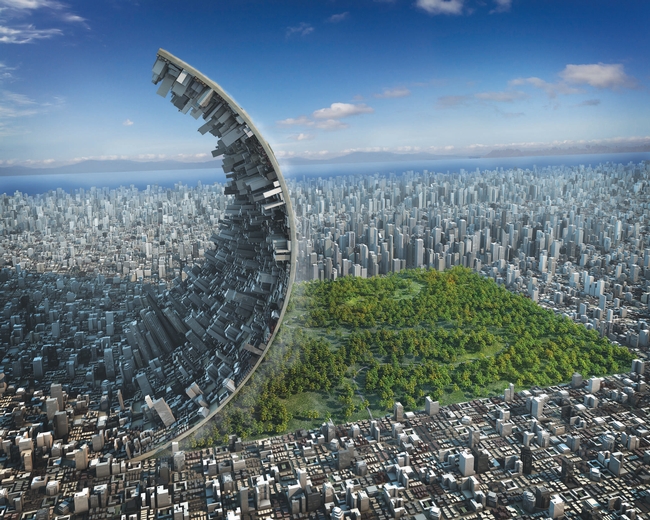
Why do we Need Green Infrastructure Polypipe (robimatic.uk)
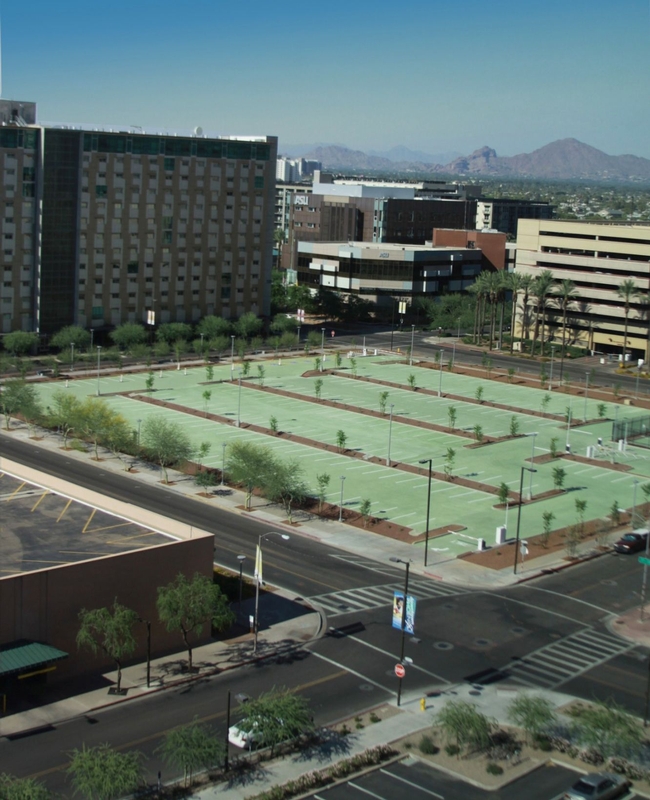
Emerald Cool Pavements (pinterest.com)
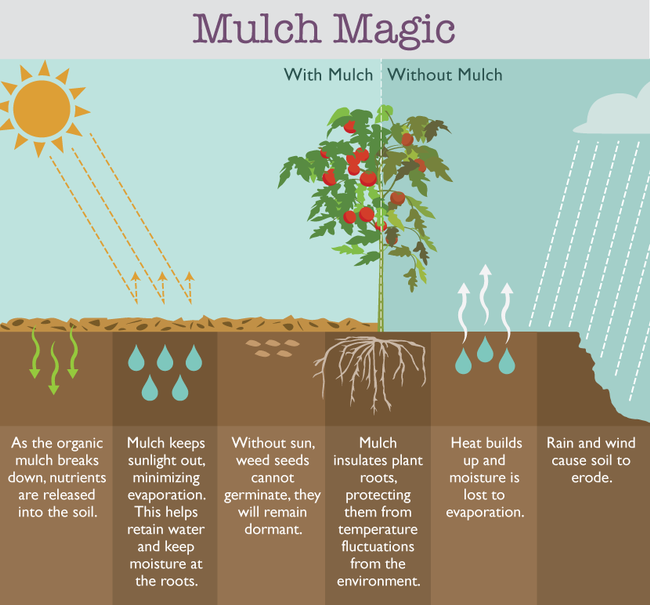
Can Mulch Prevent Weeds in Your Garden (greensocks.com.au)
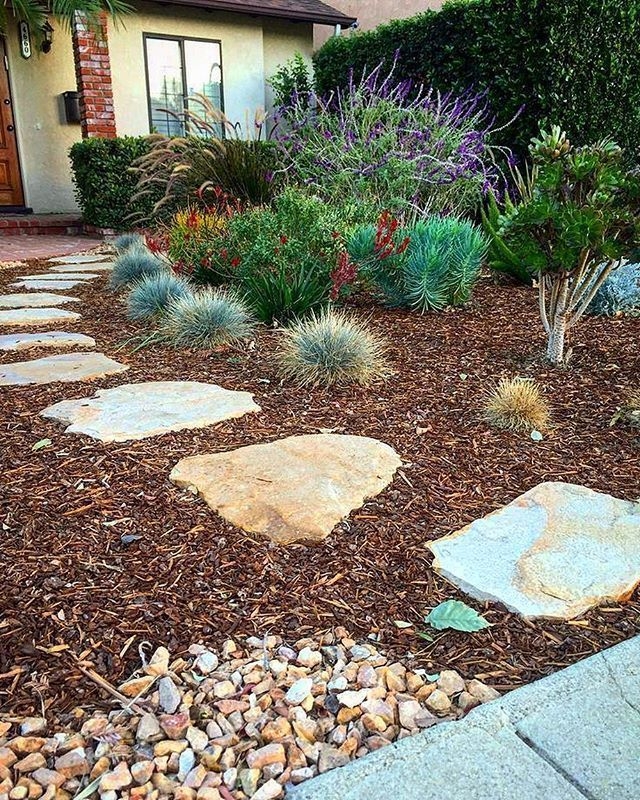
Mulch or bark make an inexpensive and attractive ground cover (pinterest.com)
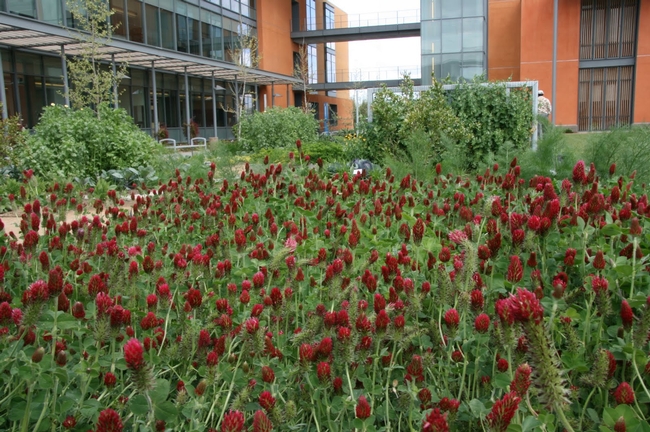
Cover Crops (goodlifegarden.ucdavis.edu)

Aden Earthworks News Permeable paving, Permeable driveway (pinterest.ca)
